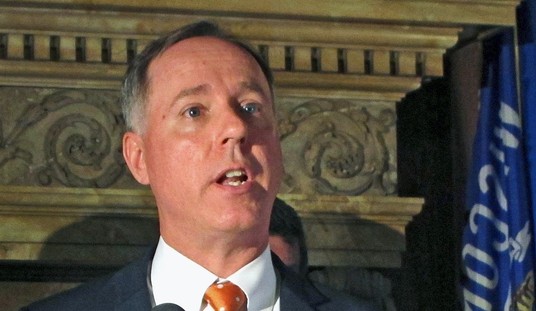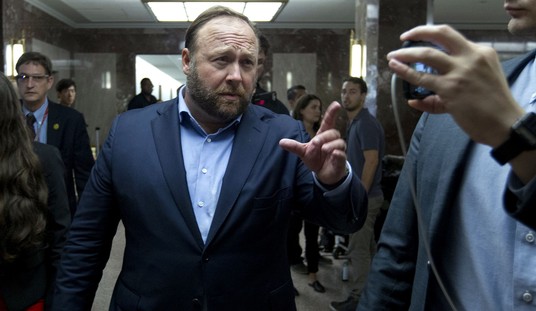Eight states will cut off long-term jobless benefits this weekend, which comes from an agreement in Washington to dial down the length of benefits from 99 weeks to 79. The move will add more than 230,000 to the numbers of those cut off in 19 other states, bringing the total this year to over 400,000 who have been dropped before the end of the 99-week provision. But Congress isn’t the only driving force behind the change. Thanks to the oddities of the jobs data, the federal formula for jobless funds have shut down the support:
Most states provide 26 weeks of benefits, and the federal government provides the rest, partially through a complicated formula that requires jobless rates to be both high and increasing to reach the benefit limit.
But the nation’s jobless rate has been steadily declining — from 9.1 percent in August, to 8.1 percent last month — causing the maximum benefit period to contract in most states. The extended benefits were reauthorized in February, but efforts by some Democratic lawmakers to adjust the formula in a way that would have kept the 99-week limit intact were unsuccessful.
Although unemployment rates are declining, job growth remains weak. More than 5 million Americans have been out of work for at least six months, and the average duration of unemployment for the 12.5 million jobless Americans is 39 weeks, according to the Department of Labor.
The nation’s jobless rate may have been steadily declining, but not the number of jobless people in the potential workforce. That’s part of the problem with reporting on jobs numbers over the last three years. The previous 27 years saw either a steady increase in the percentage of people participating in the workforce or a steady plateau in the measure. Here once again is the 30-year chart for the civilian population participation rate, which sets the denominator for the equation that produces the overall unemployment rate:
For 20 years, that rate held very steady, which made the overall unemployment rate a very reliable indicator of job growth and job destruction in the US economy. The sharp drop in the participation rate changes the context of the jobless rate. Don’t forget, as I mentioned in my column for The Fiscal Times yesterday, that our population added at least 4 million people as eligible to the workforce over the last three years of recovery. Even though we have appeared to regain the jobs lost since January 2009 in this chart, the context of population growth shows that we haven’t even really kept pace with the post-crash loss:
One can argue that we have made up the ground lost in 2009 on jobs, or at least had until March and April of this year. That ignores the problem of population growth. Economists differ on how many net additions of working-age adults occur on an average each month, with a range from 100,000 to 160,000.
Even at the low end of the range, we would have added 3.9 million working-age adults to the workforce over this period of time, and at the more-accepted benchmark of 125,000 per month, that number goes up to 4.68 million. As this chart shows, just by getting back to the start of 2009, we are now 4 million jobs or more further in the hole.
We have added more than 7.9 million people to the category of workforce-eligible persons not in the labor force since 2009, and the most rapid increase has come post-recovery:
 Those numbers continue to climb. In that period, more than five million have moved to disability insurance (another 225,000 in April alone), most likely after their jobless benefits ran out, while another million still want to find work while not formally participating in the labor force by looking for work. Thanks to that exodus — and thanks to that exodus alone — the jobless rate has fallen to a level where even more people will get thrown out of the workforce.
Those numbers continue to climb. In that period, more than five million have moved to disability insurance (another 225,000 in April alone), most likely after their jobless benefits ran out, while another million still want to find work while not formally participating in the labor force by looking for work. Thanks to that exodus — and thanks to that exodus alone — the jobless rate has fallen to a level where even more people will get thrown out of the workforce.
The Washington Post only notes the aftereffects of this problem while repeating the contextless claim that “the nation’s jobless rate has been steadily declining”:
The GAO estimates that 2 million people exhausted unemployment benefits as of early 2010, and although some had spouses or accumulated assets for financial support, nearly one in five fell into poverty. An additional 3.5 million exhausted benefits in late 2010 and 2011, the GAO reported.
“These cuts are coming faster than the economy is improving, which means more workers will have to survive without any jobless assistance, and families will have less money to put back into the economy,” said Christine Owens, executive director of the National Employment Law Project.
The real problem is that we have added only 1.862 million jobs since the June 2009 recovery while adding 4 million people to the eligible workforce. We have spent the last three years falling behind, not catching up, and the media seems incapable of connecting those dots.










Join the conversation as a VIP Member